Dear Friends and Family,
And so my travels continued. I left Grand Teton and Jackson Hole going east by southeast, once again over the continental divide and into the heights of the Wind River Range.
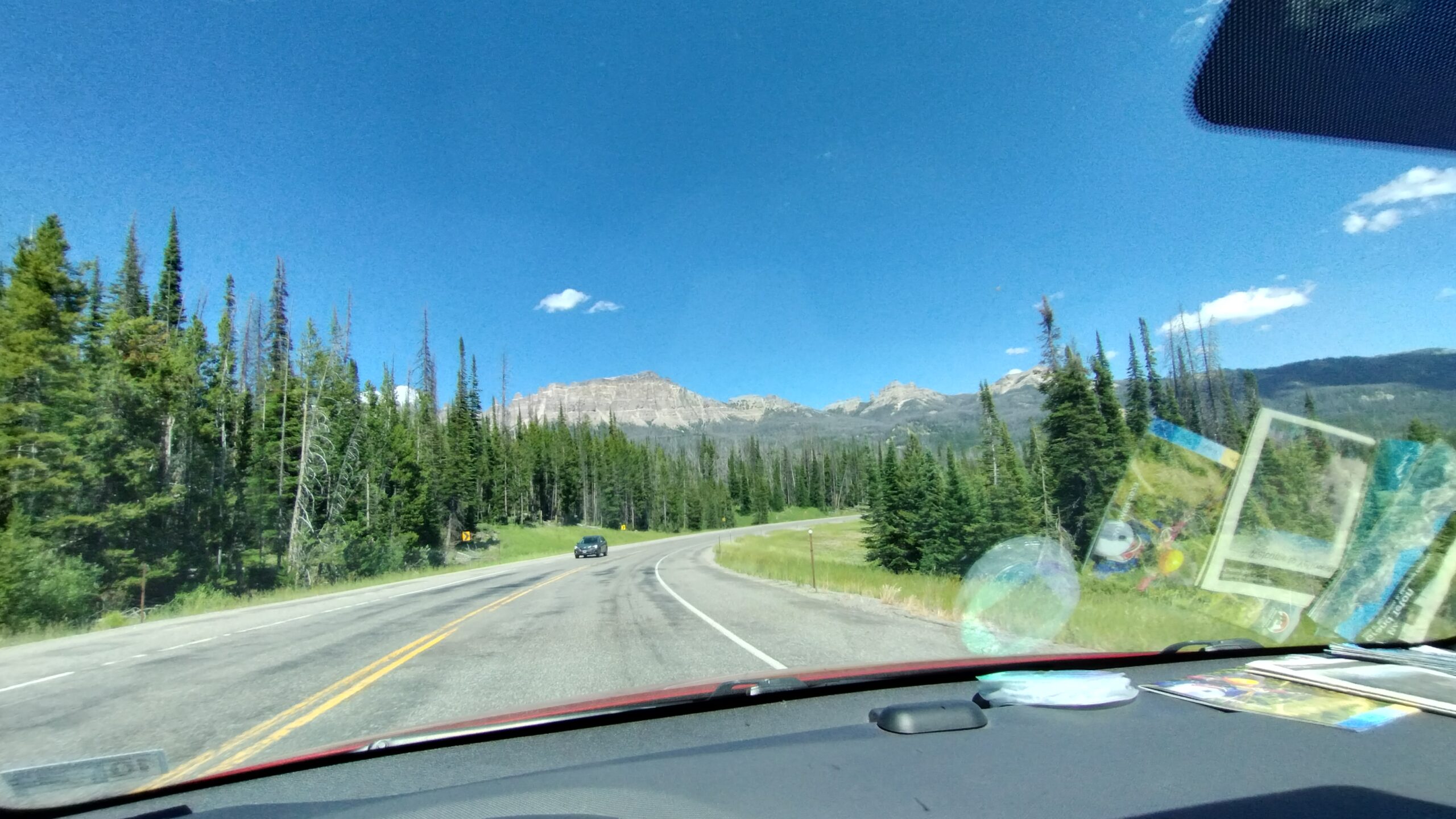
I think most people have a negative perception of Wyoming as a deeply boring and empty state. If you’ve been to Wyoming, but haven’t been to Teton or Yellowstone, you were presumably driving across the long and empty I-80 corridor, which Google Maps usually gives as the fastest route from the east to Utah, California, and beyond. I think this is deeply unfair to the Equality State; the interstates are built in the easiest place to build them, and that usually precludes highways going over mountains and valleys and gorges.
But take the roads less traveled and less laned, like US-26, and you’ll see some much more interesting country:
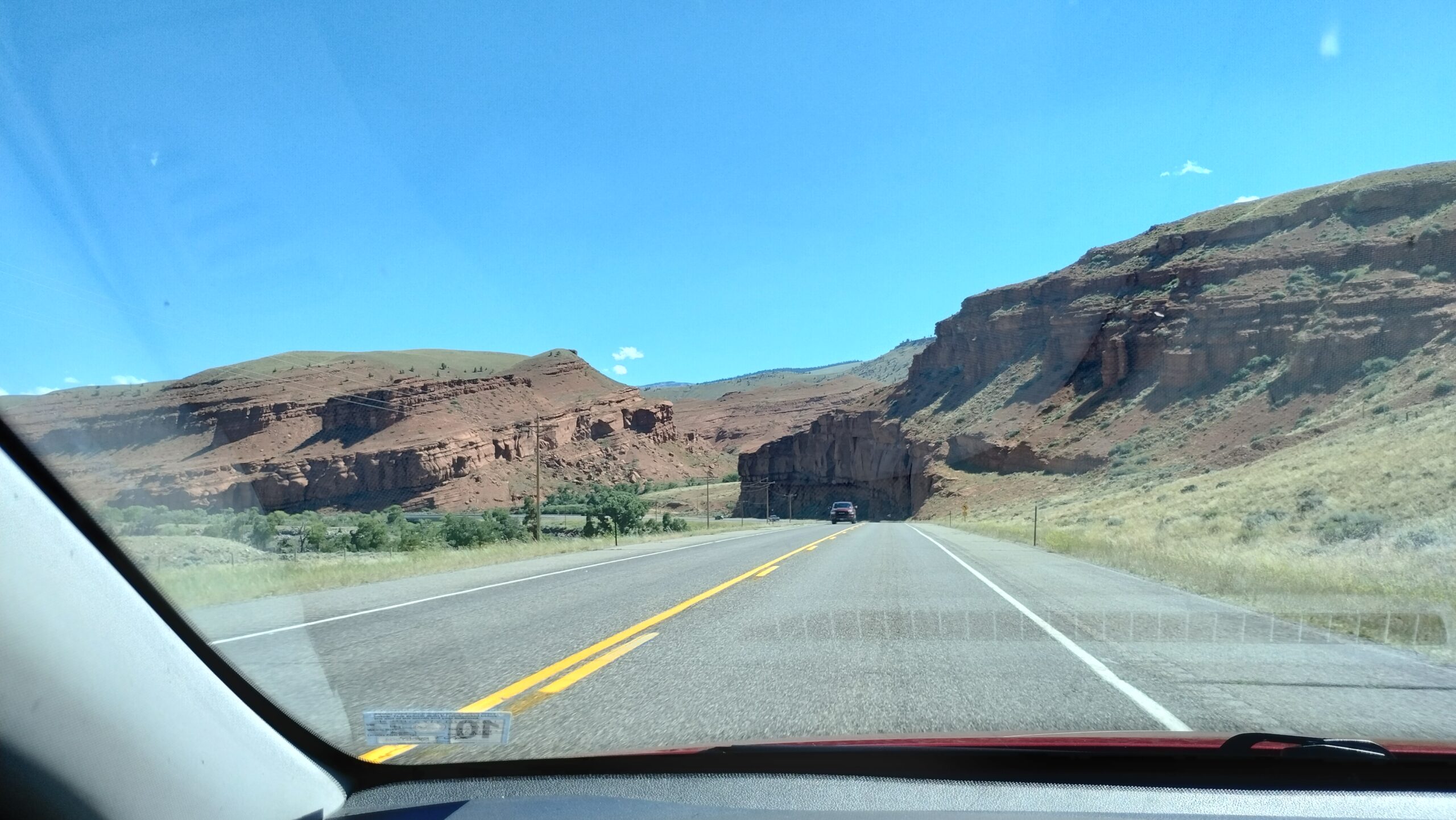
Coming down from Two-Ocean Pass.
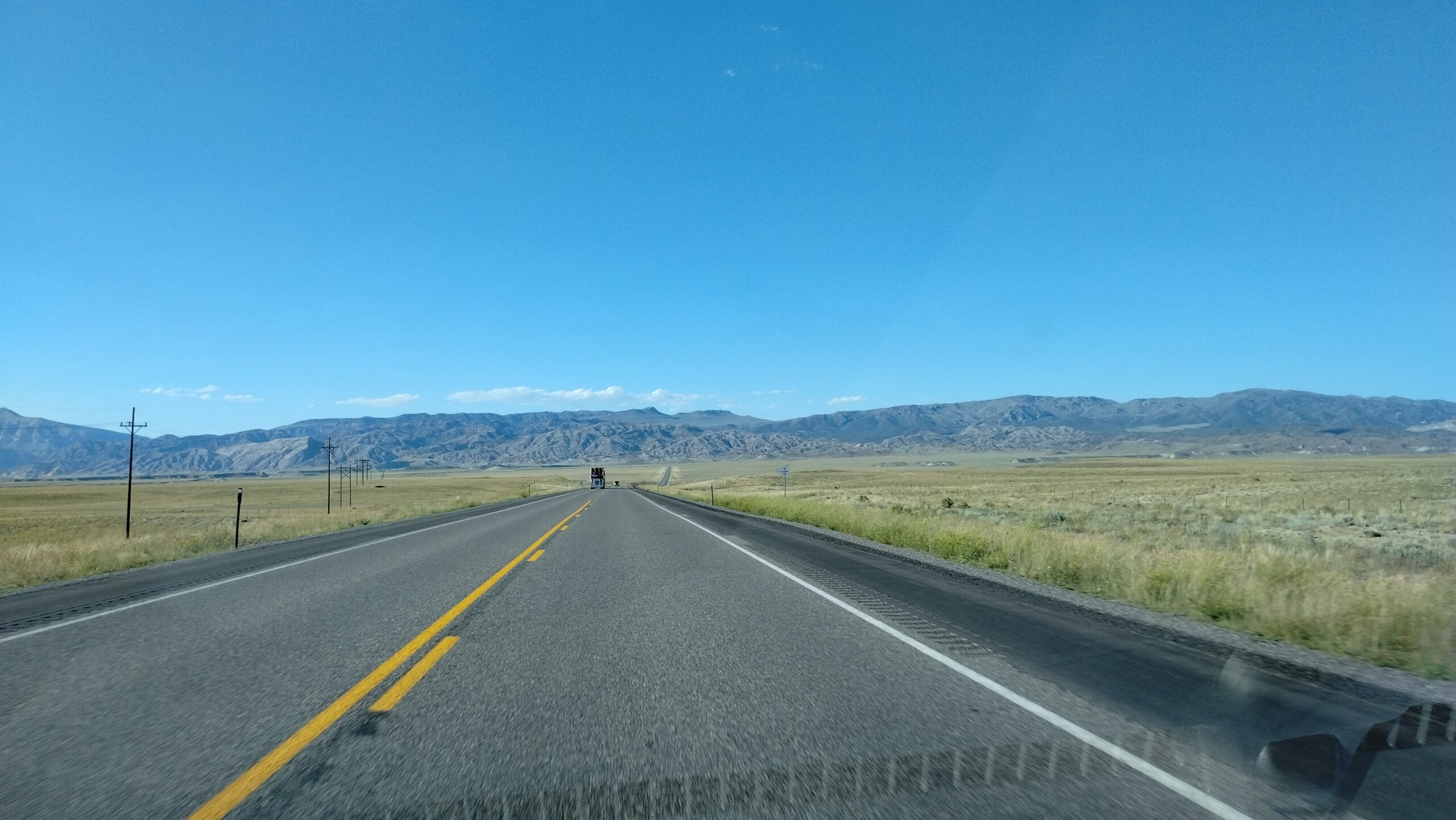
More of the Wind River Range in the distance. Gannet Peak, the highest point in Wyoming, is somewhere in those mountains.
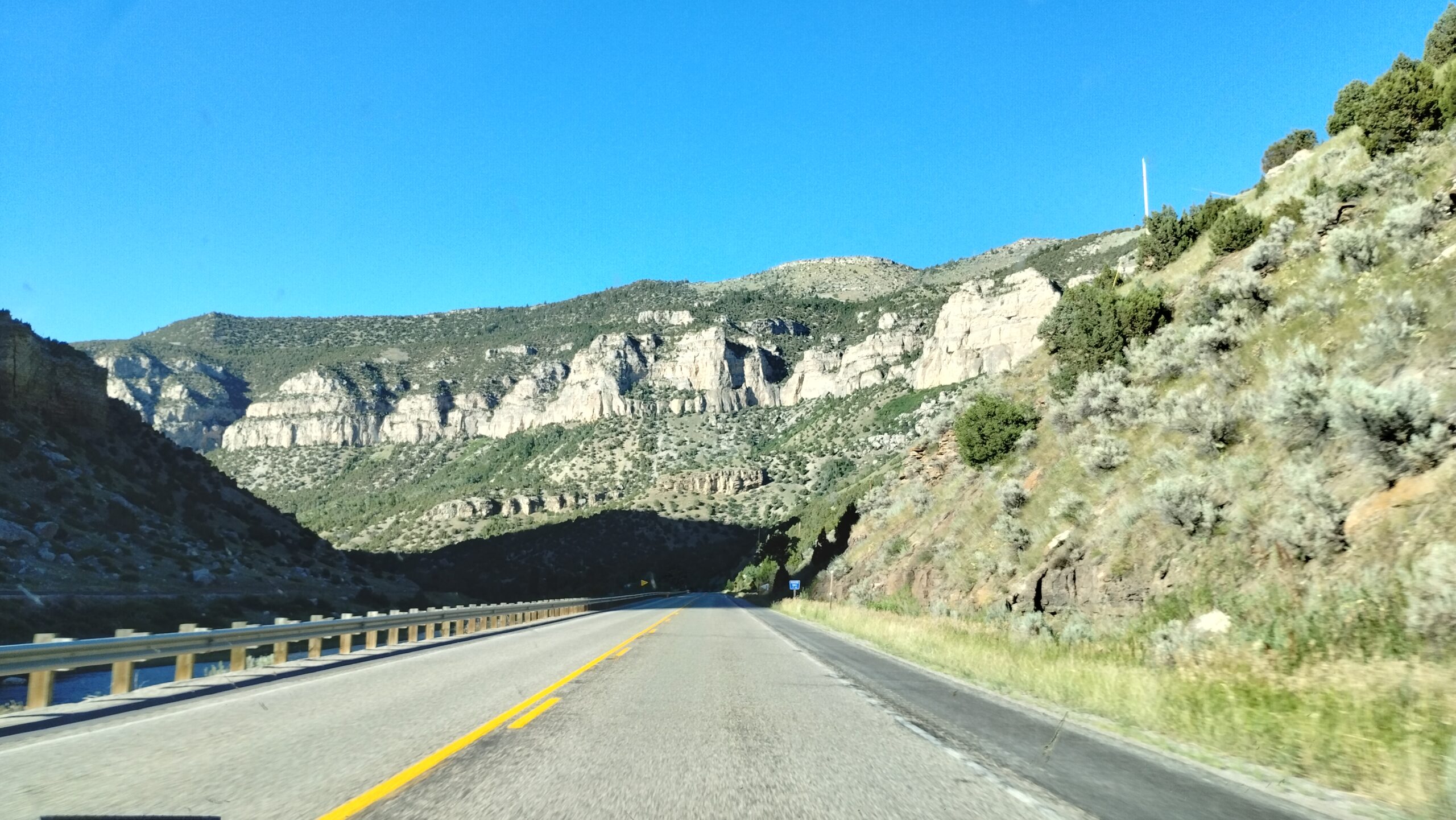
Entering the Wind River Canyon, north of Shoshoni.
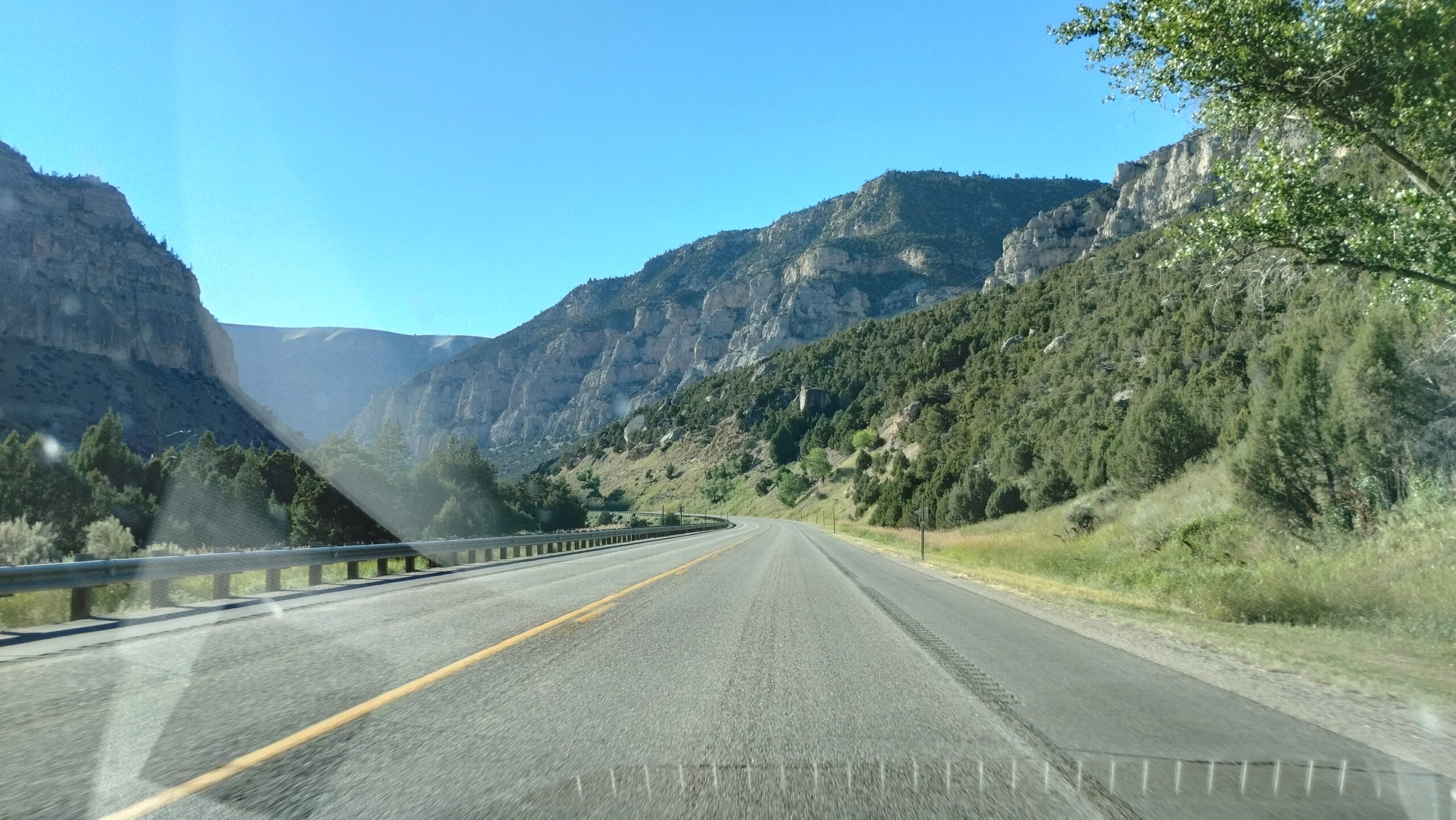
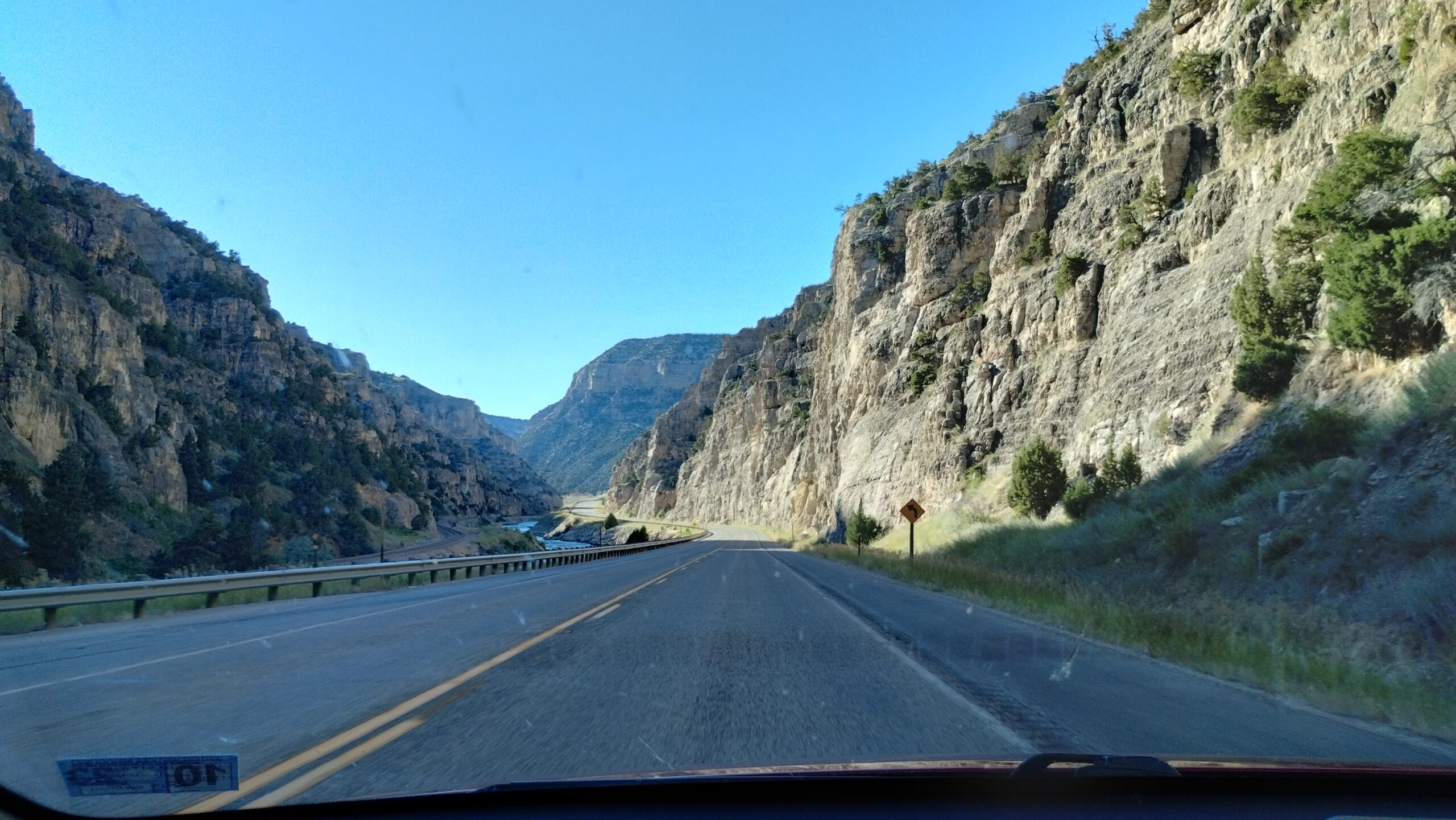
I can’t believe they fit the road in here, to be perfectly honest.
As you can tell by the number of dashboard photos in this post, I had a lot of driving to do to make it from Teton to my next destination: Thermopolis.
Thermopolis is a smallish town in the north-central part of Wyoming people don’t think too much about. But the name is a good clue to why the town exists, and why I stopped there:
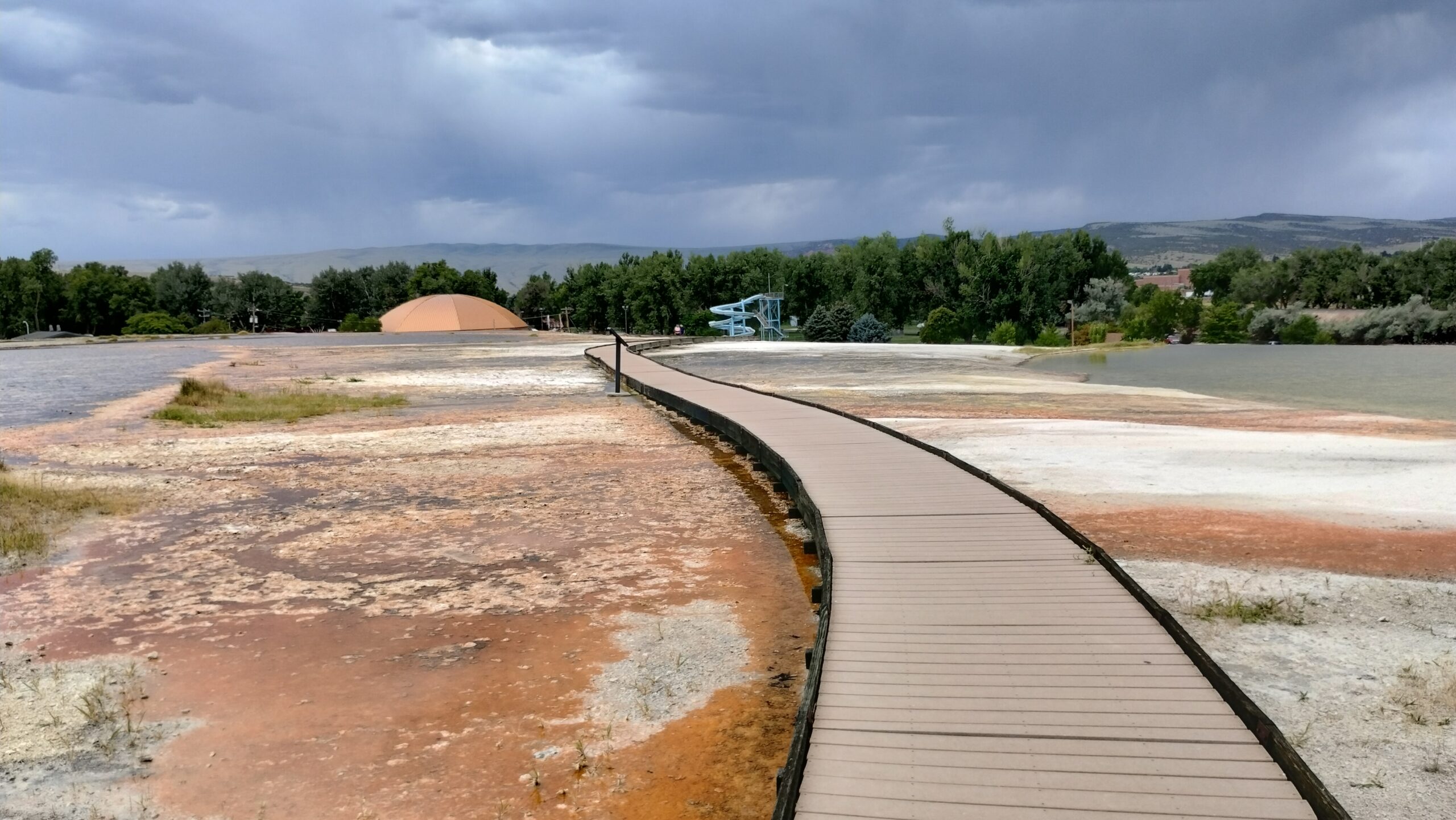
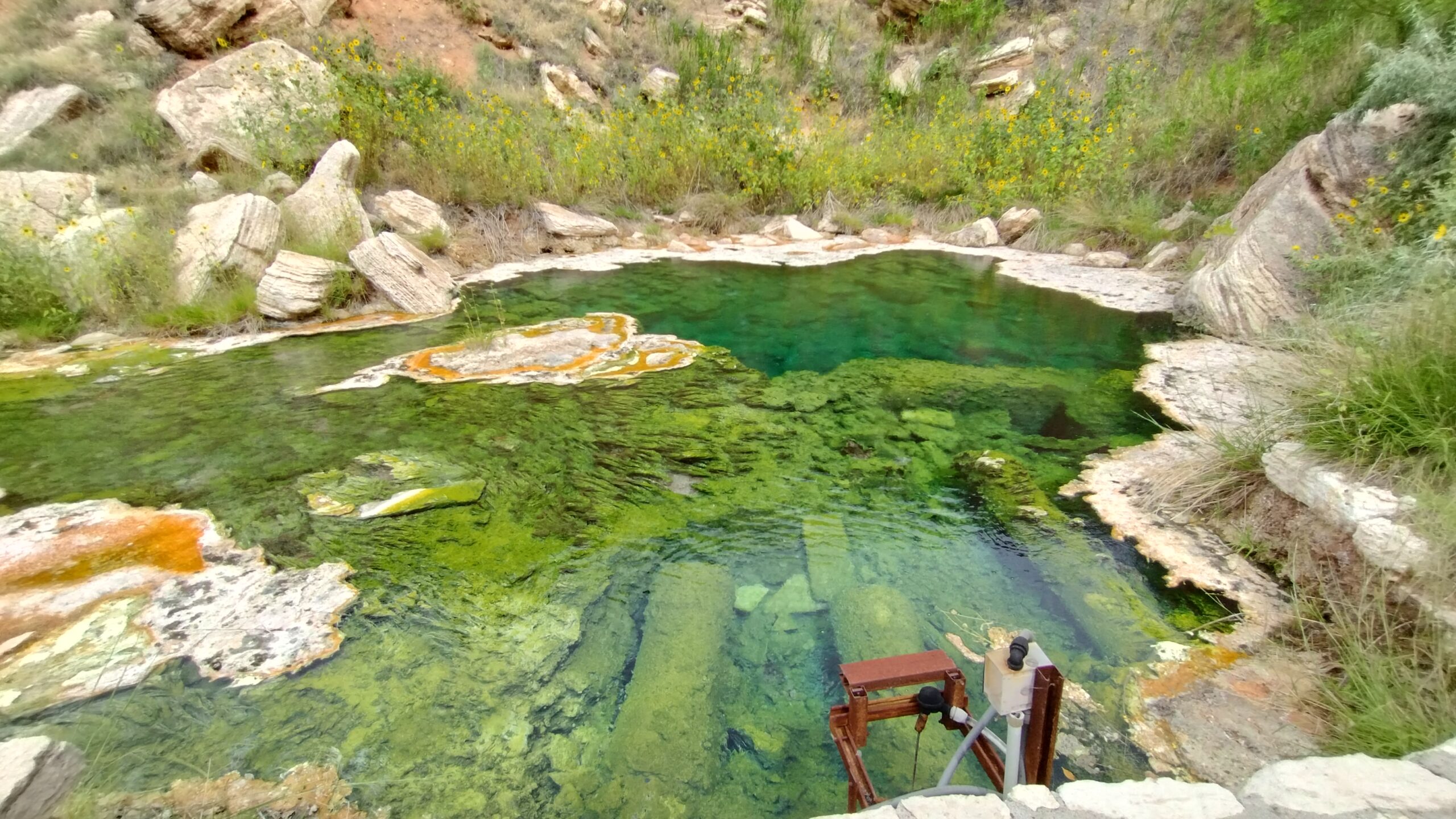
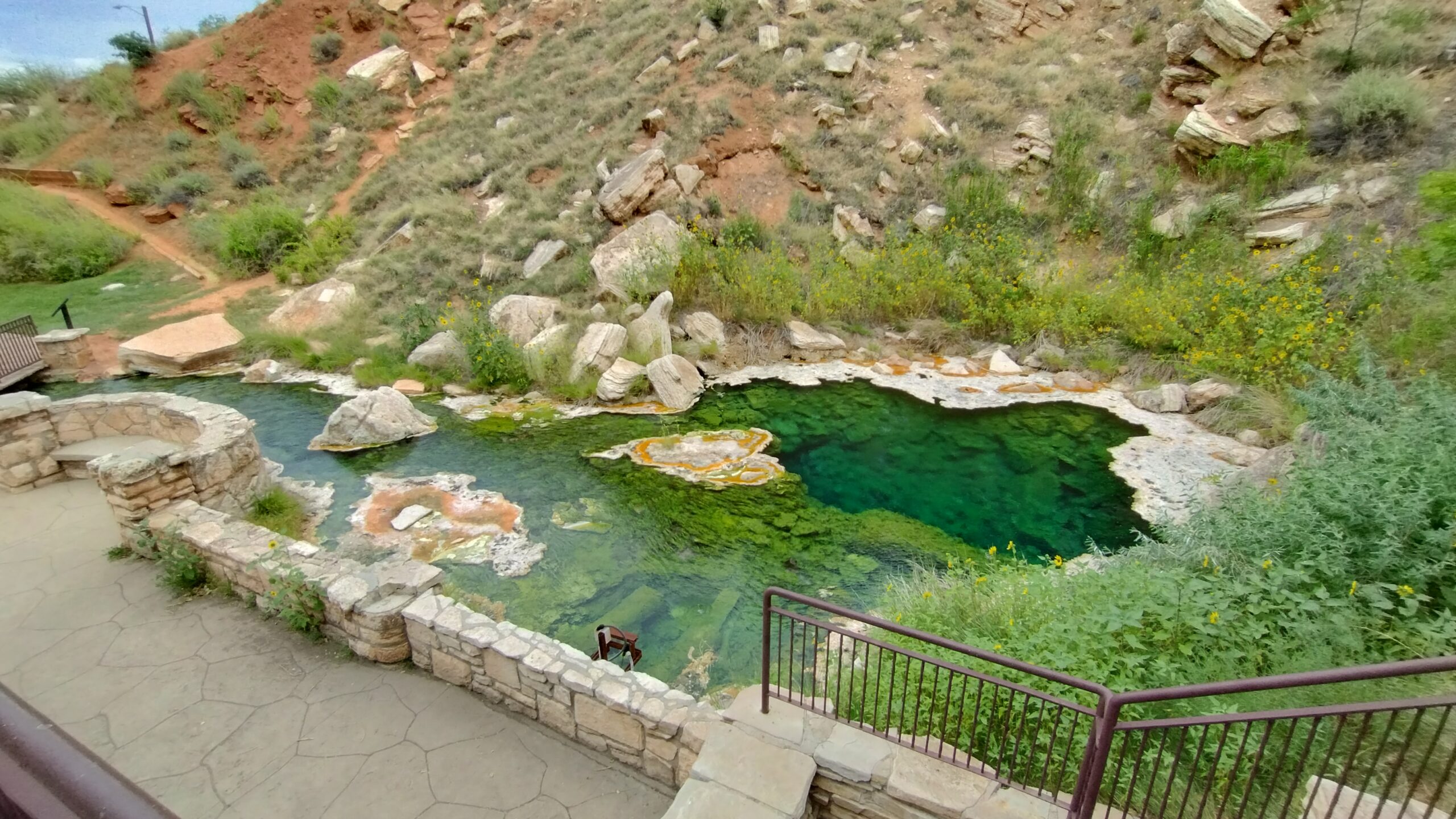
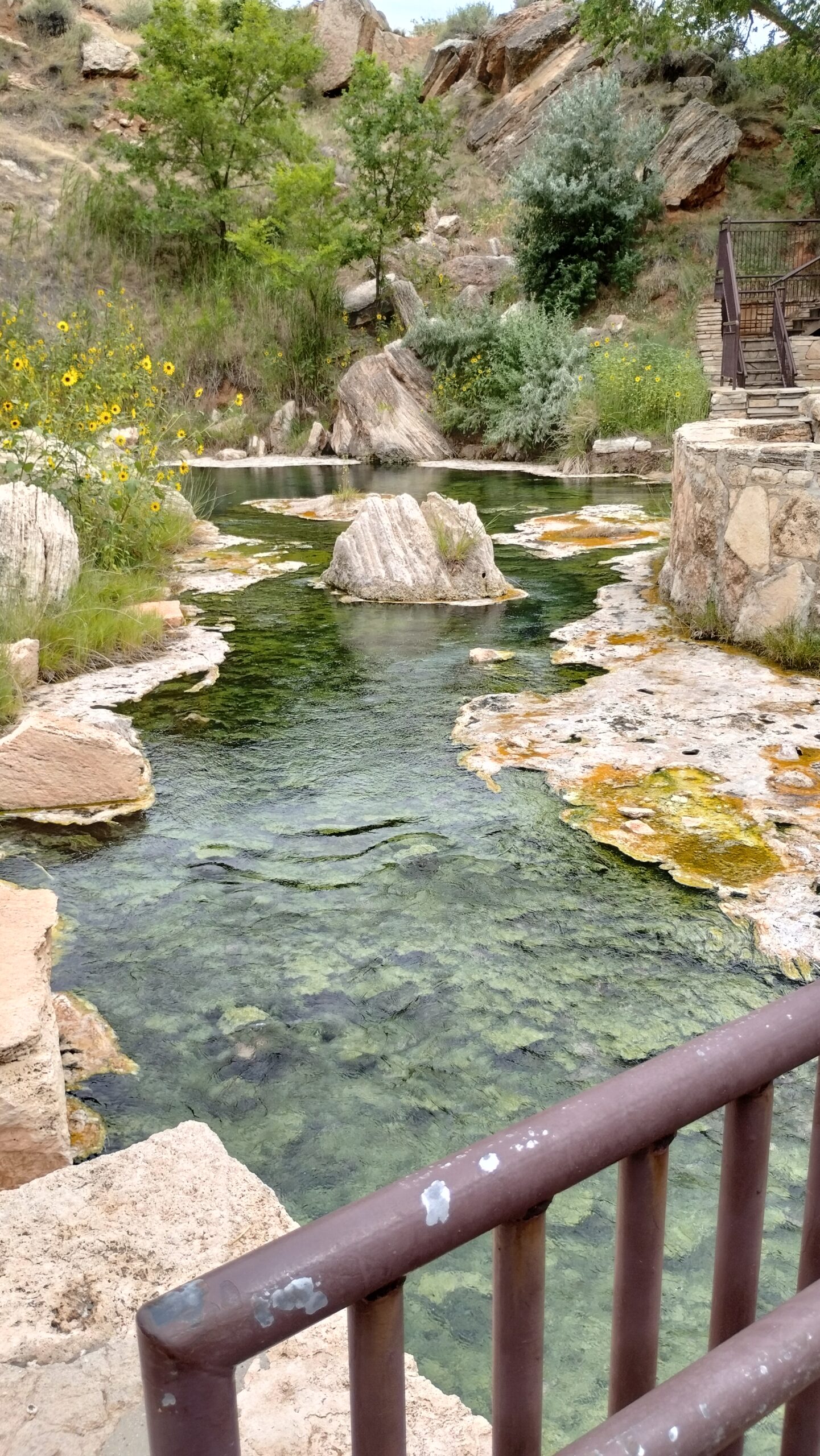
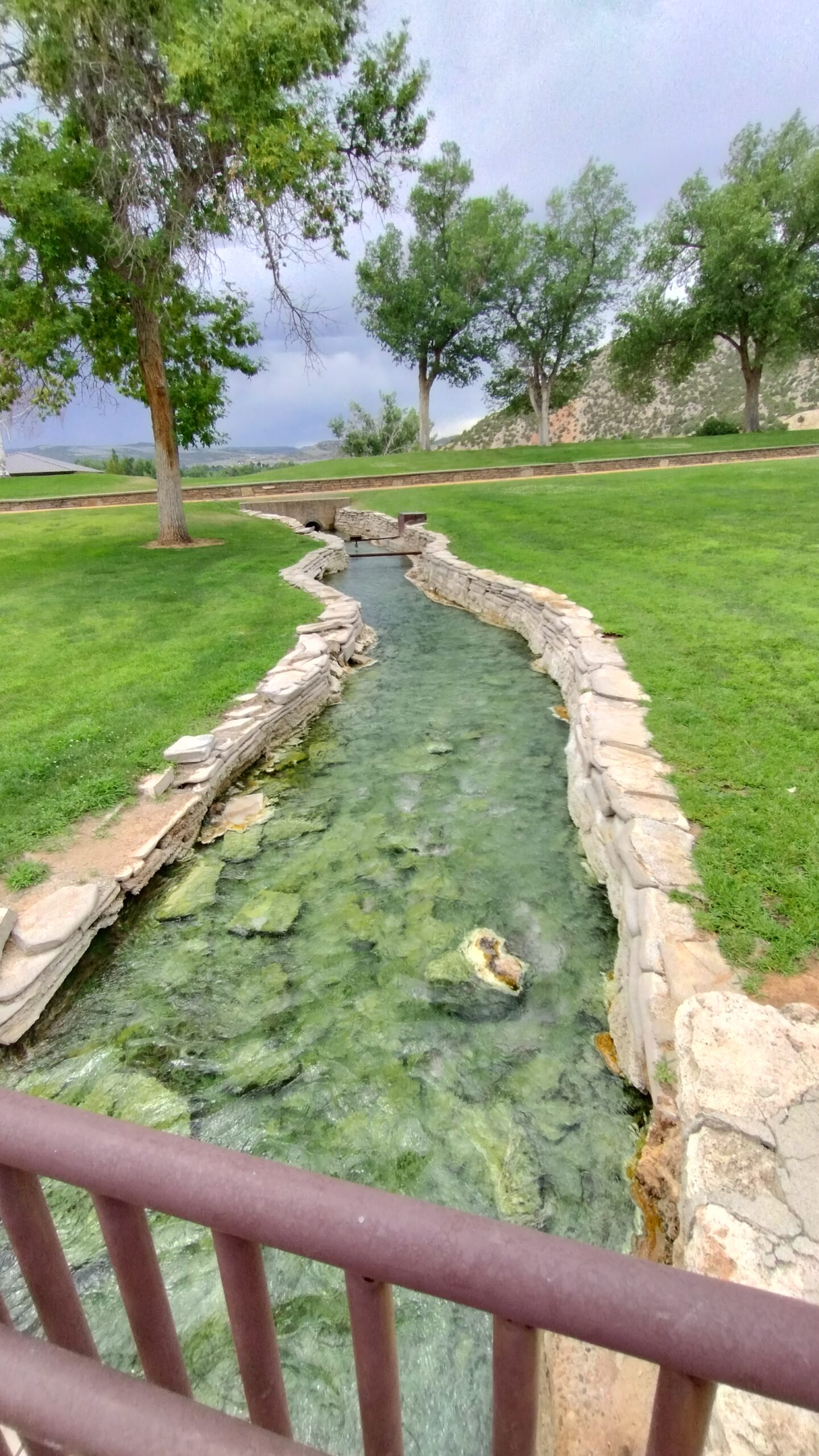
Better yet, it’s full of hot springs you can actually enter!
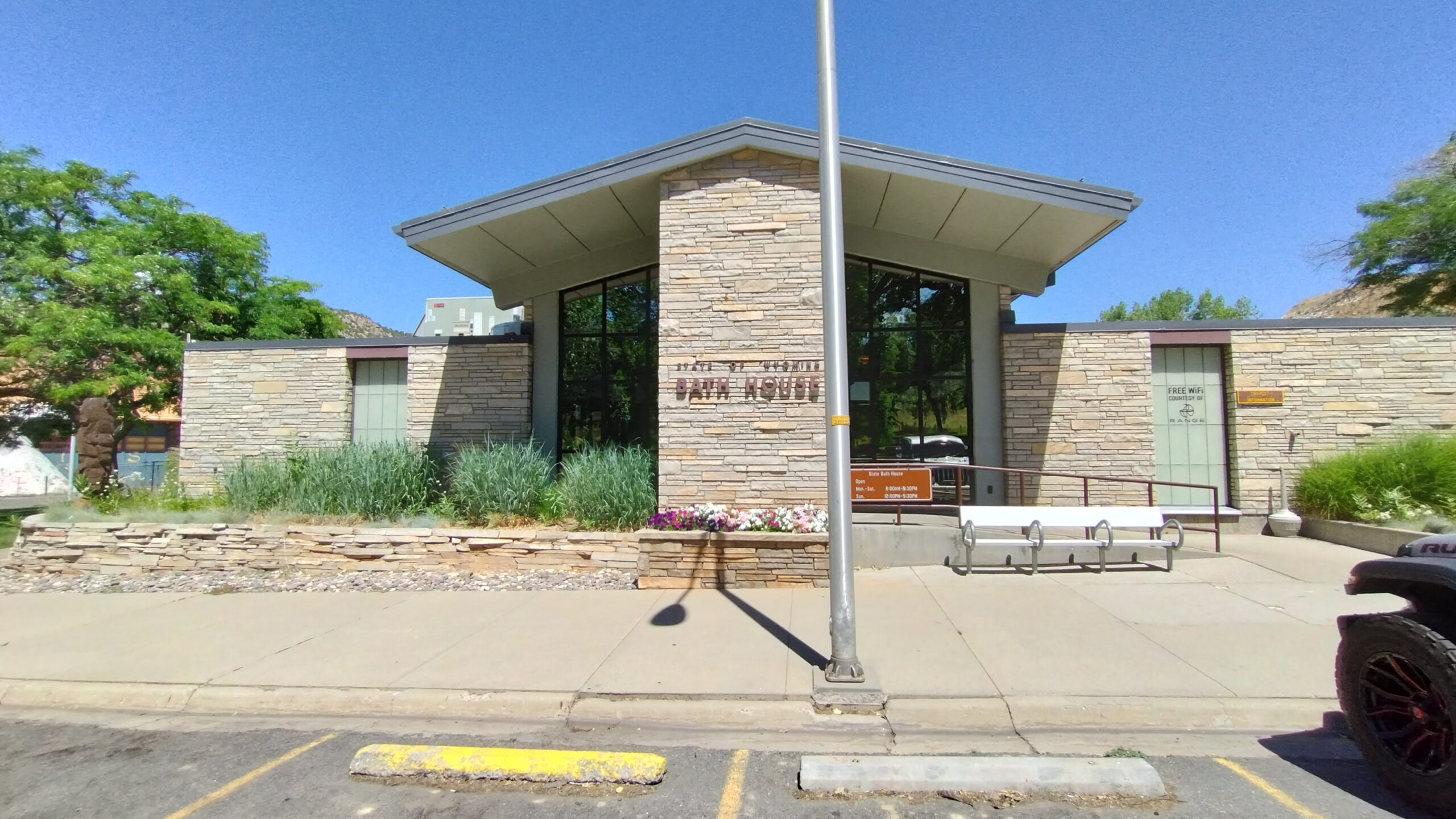
The state of Wyoming has a genuine, traditional public bathhouse constructed around the hot springs in Thermopolis. And it’s free! The springs bubble out of the ground at around 180 degrees F, but cool off to around 90 by the time they reach the pool. The water is clean and hot, but very minerally and very sulfurous. Bathing in it definitely feels like a hot bath with some kind of salts or bath bomb added, and it feels great.
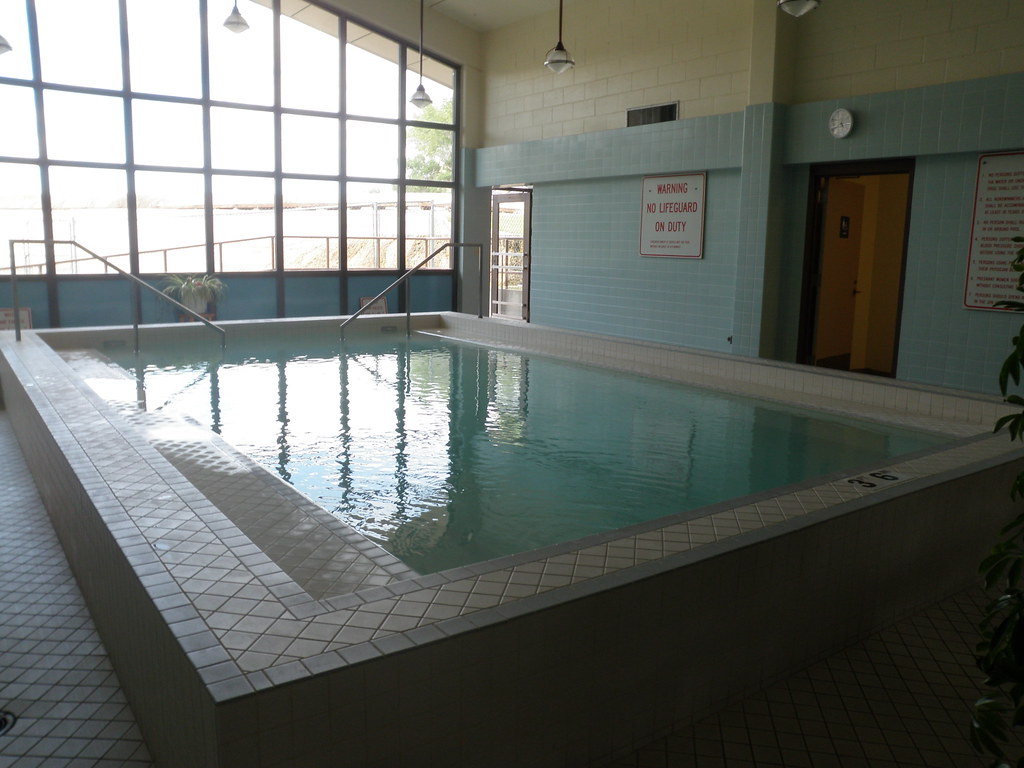
Honestly, having a publicly open hot spring like this is actually an extreme rarity. When I started my trip, I envisioned most western hot springs as small, natural pools hidden among willows and reeds deep in the woods on some mountain flanks. I mean, that’s the platonic form of a hot spring, right?
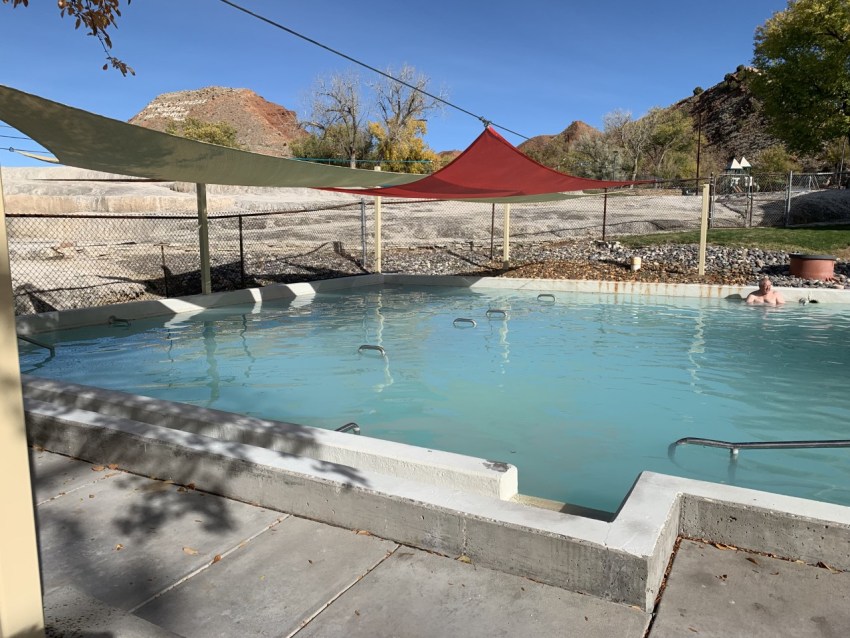
I got this photo from online, which is why the leaves are starting to change in the background. I wasn’t about to take photos of the springs with the bathers in it.
Well, for one thing, many hot springs in the west are in inaccessible places; in searching for Blackrock Springs near Taos, New Mexico, I found that the springs were actually submerged underneath the Rio Grande, and couldn’t be hiked to during spring and summer floods. When I looked for the Miracle Hot Springs in Lake Isabella, California, I found that the town had actually dismantled all of the collecting pools because teenagers were hanging out at them and drinking and smoking and generally cavorting. Which is a stupid reason to dismantle a spring if you ask me; the kids are still going to do hang out and get messed up and generally fuck around, now they’re just going to do it in the Walmart parking lot instead.
But anyways, the real tragedy of almost all western hot springs is this: as soon as a spring is discovered, someone in the late 1800s buys up the land around it, fences it all in, and sets up a private “health resort.” A town springs out of the area, maybe a railroad comes in, and its fortunes rise and fall with the tourist trade. The “resort” might even close, but the owner never gives the springs back to the people or the land, and us good and friendly folk are shut out of one more place to sweat out our issues. Such were the fates of: Dixie Springs, Utah, Sol Duc Springs, Washington, Camas Springs, Montana, and many, many others that I sought out on this trip. But at least in Thermopolis, Wyoming keeps the springs open, and I very much enjoyed my dip 👍.
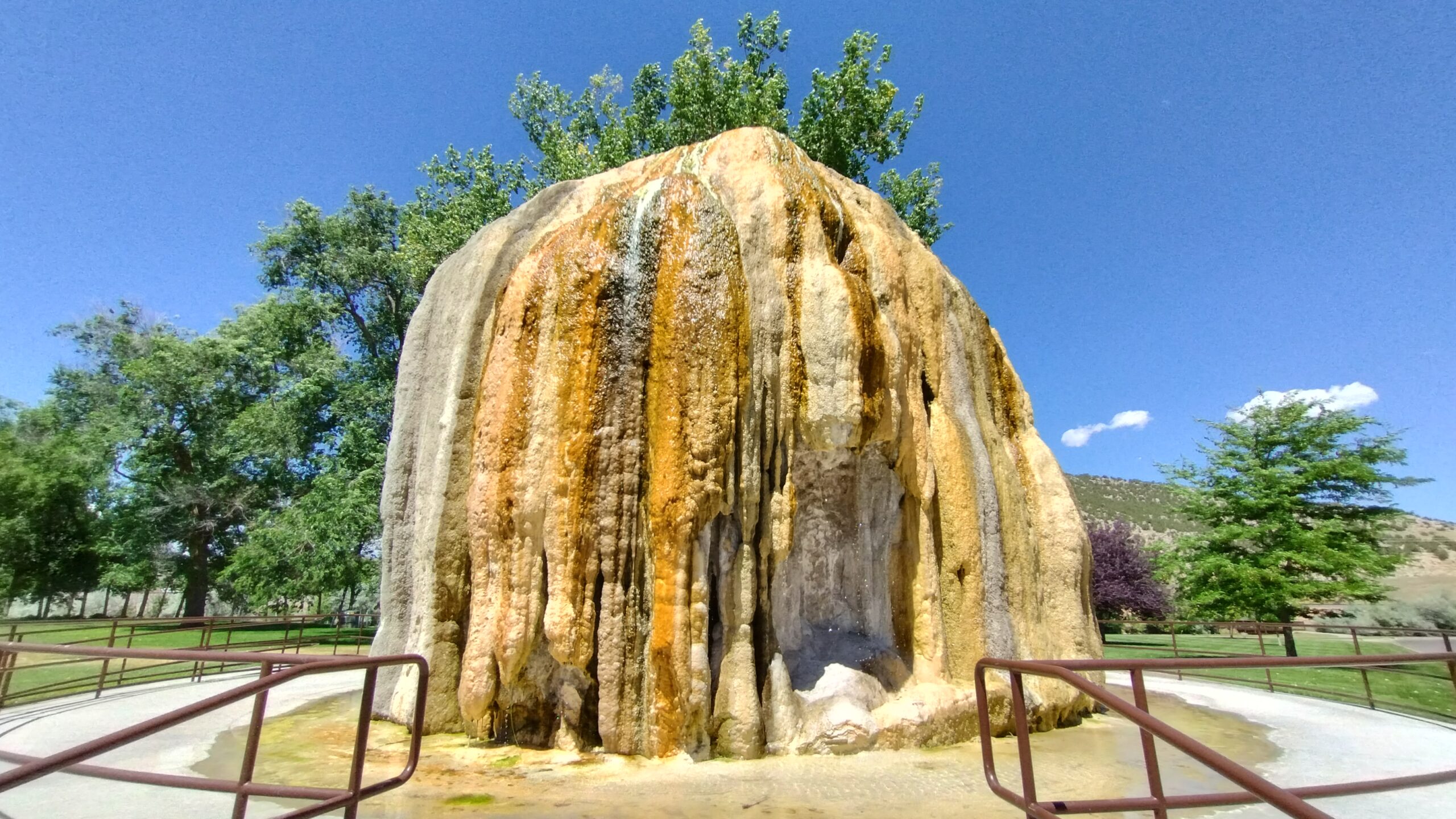
A live (albeit slow) demonstration of the mineral content in the water.
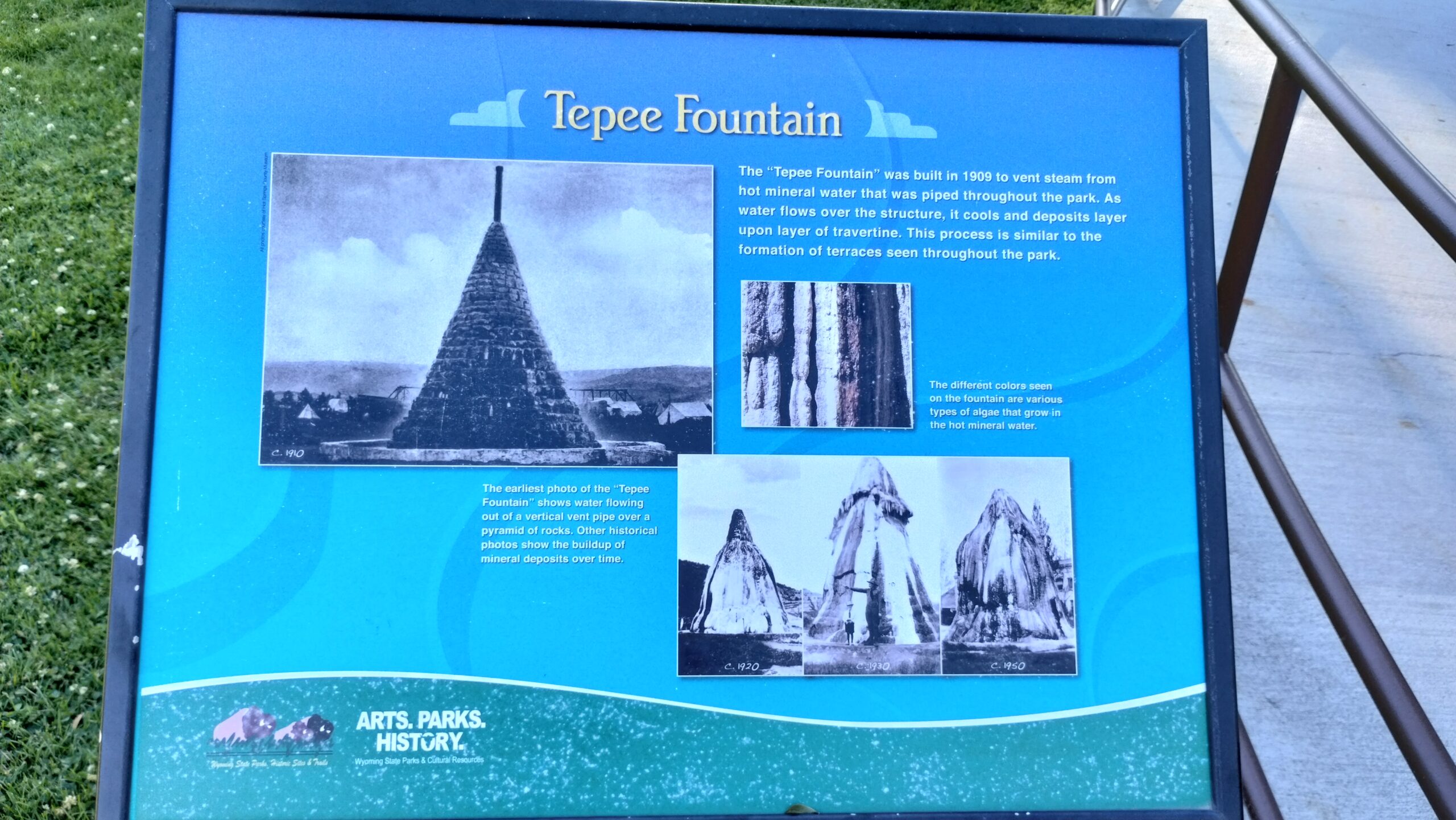
According to this sign, the “teepee” fountain was only a third its current size a hundred years ago, and has gradually accreted over the years.
The town park where the hot springs are located is full of other kitsch too, like this suspension bridge over the Bighorn River:
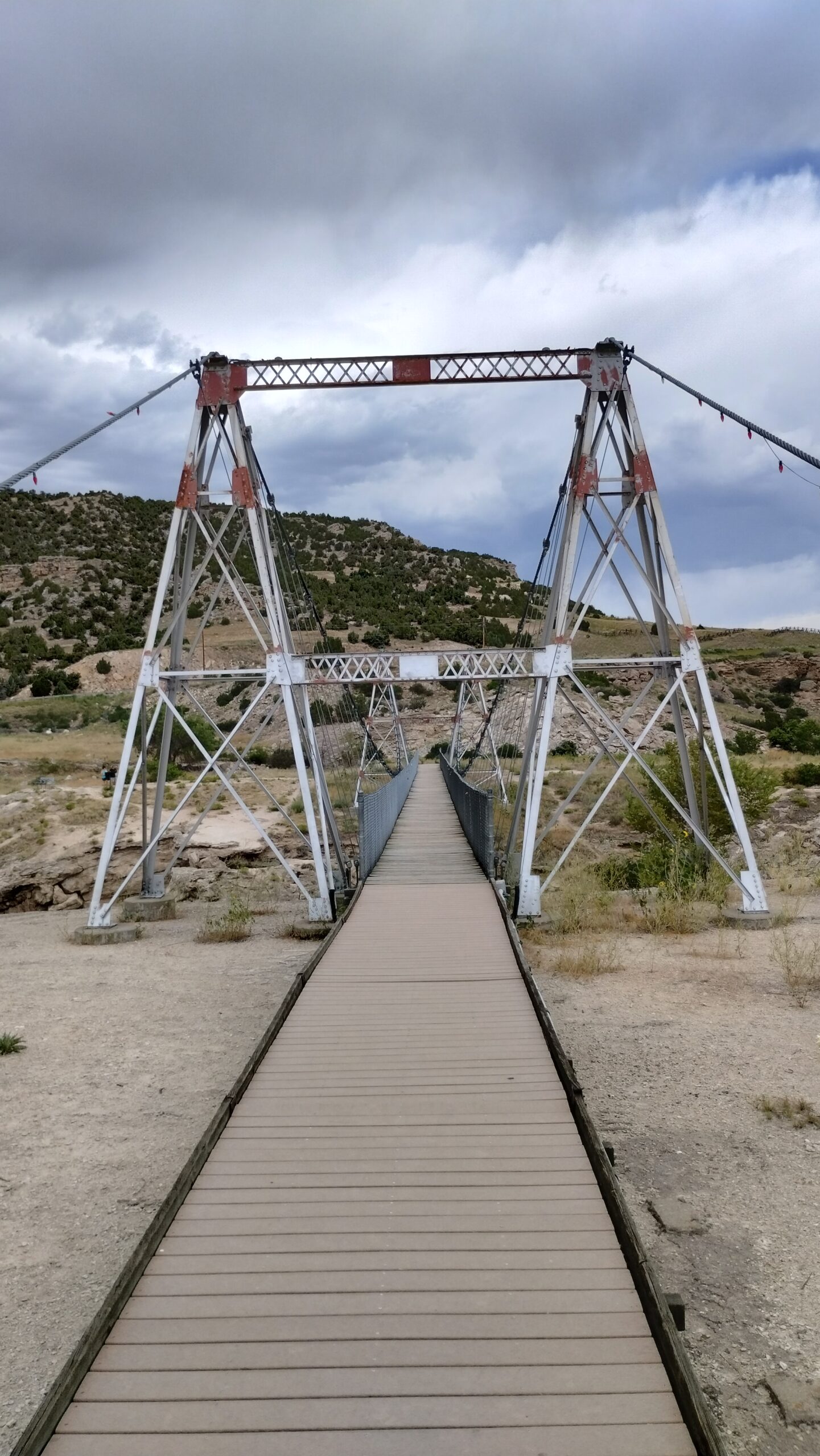
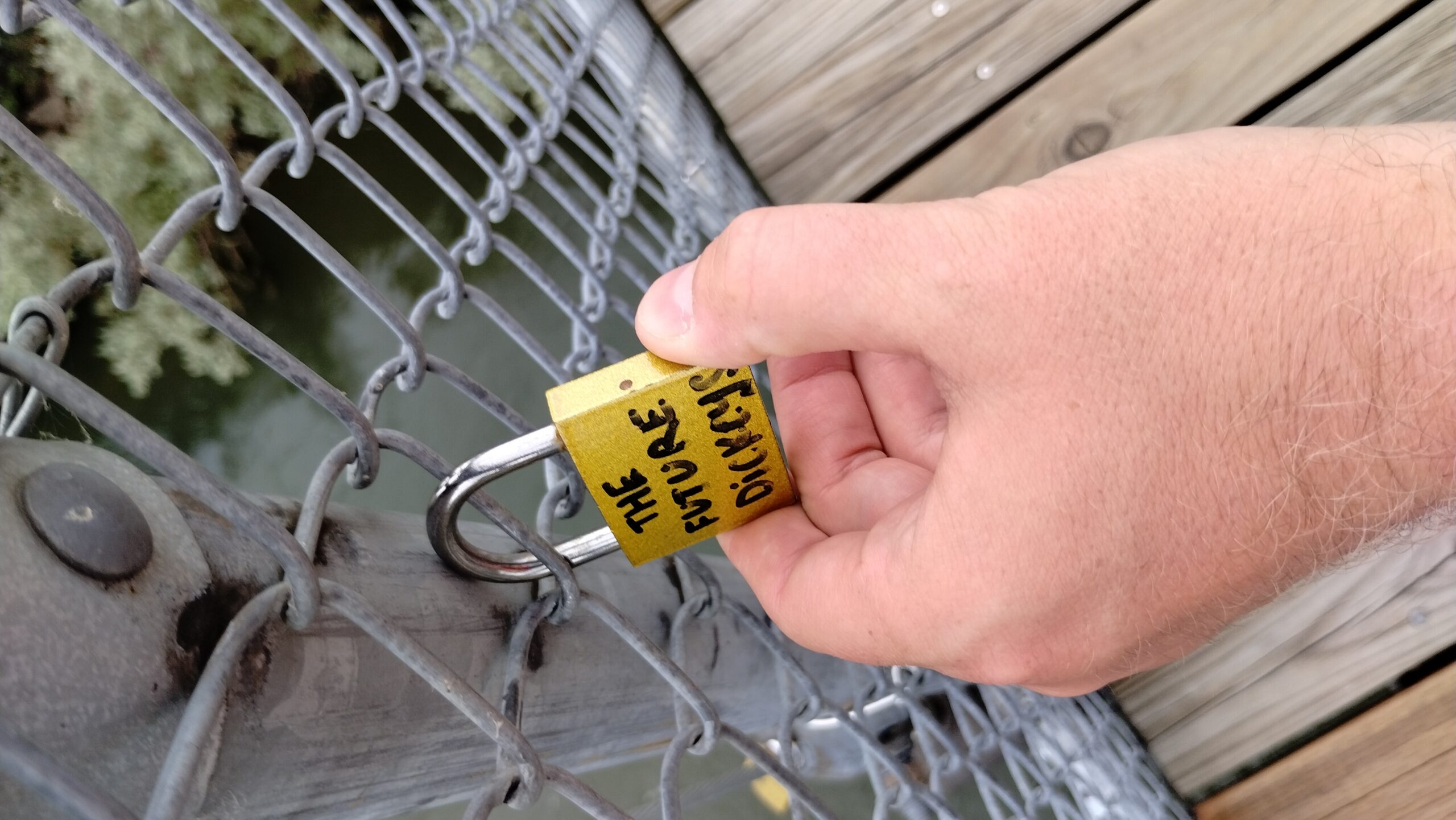
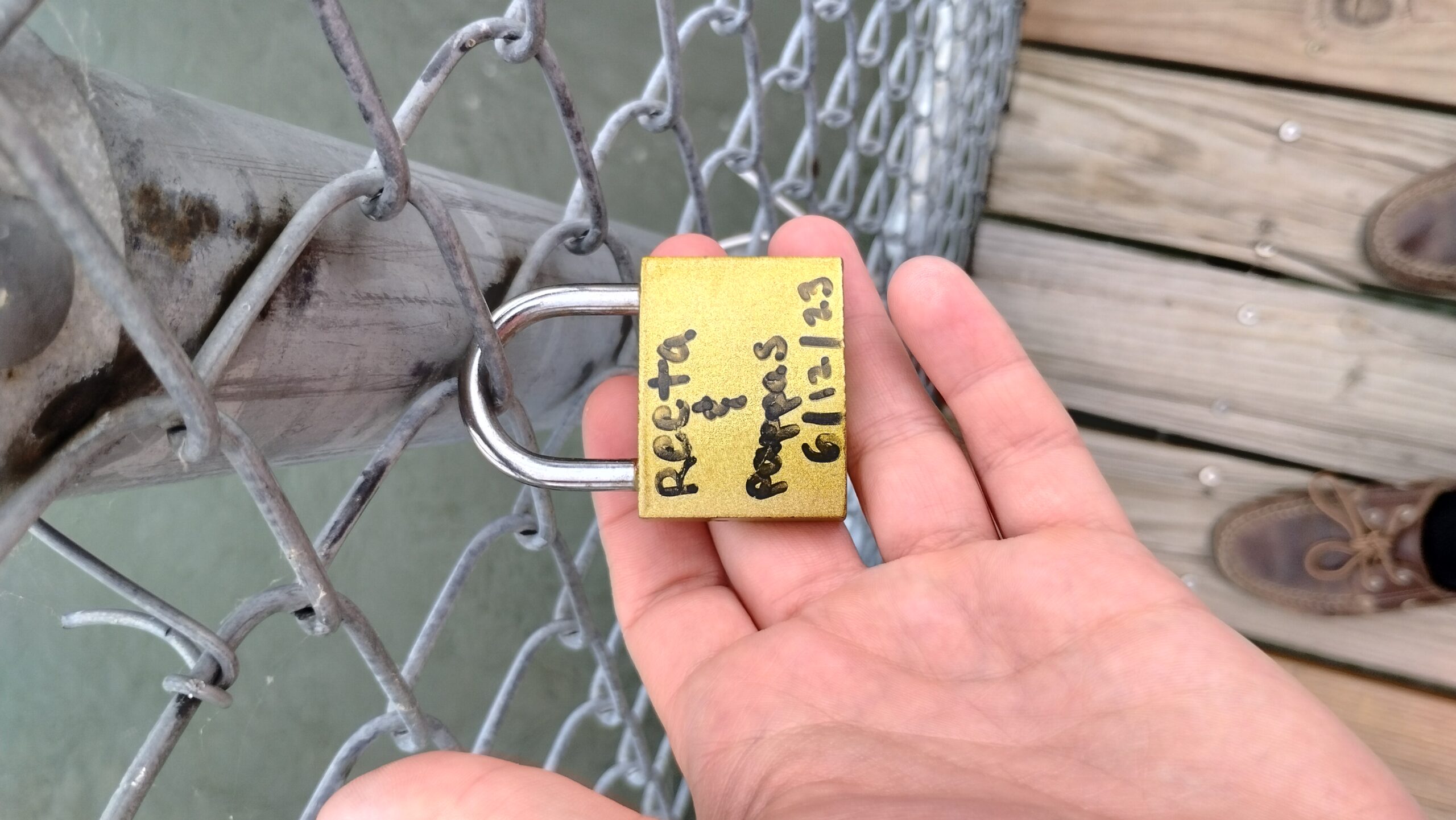
God, I just can’t get enough of these little places where people clasp shut their locks and declarations of love. Why can’t I find a cute dude to do this with? Kinda homophobic ngl :/
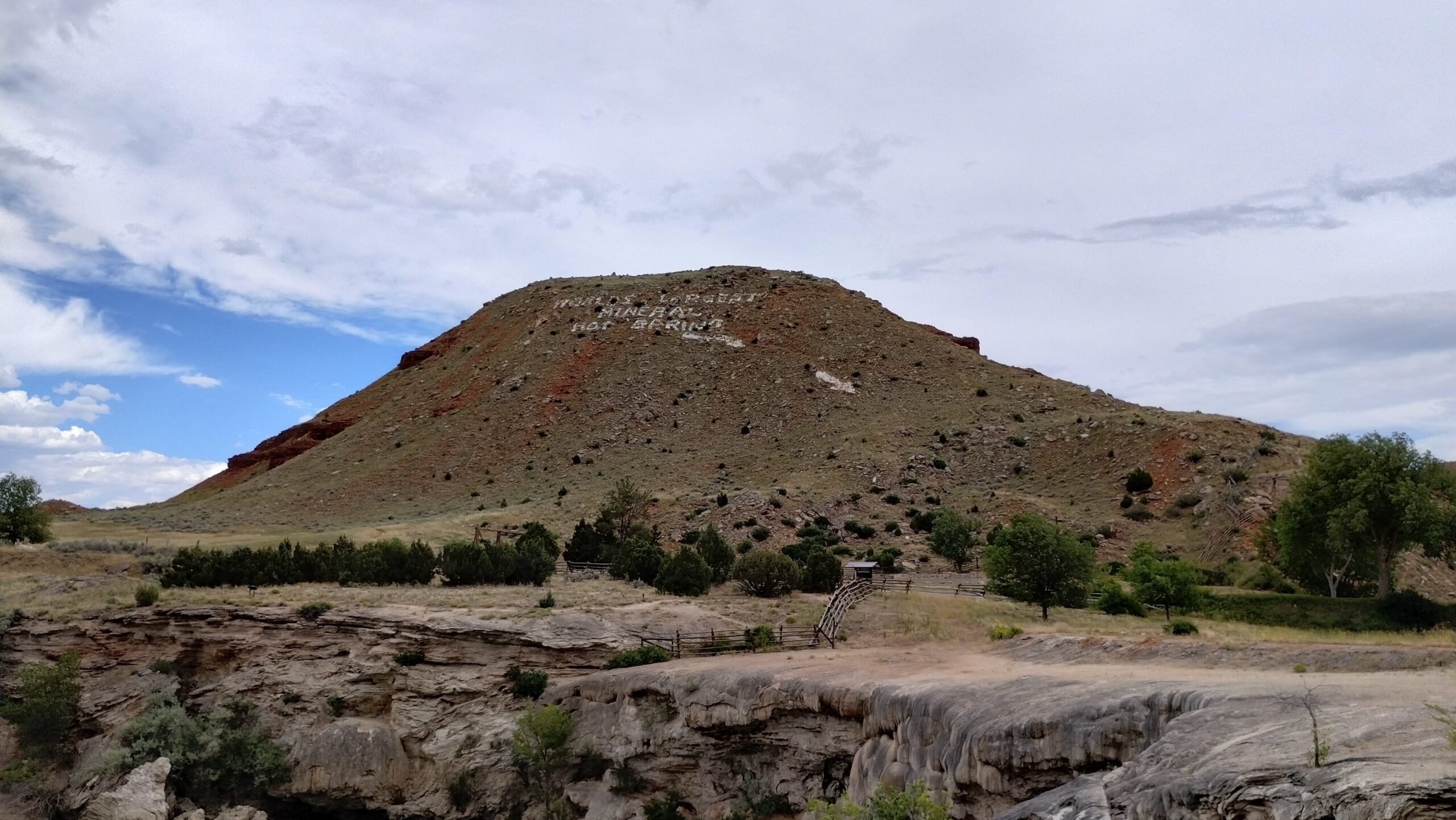
Another cool thing I’ve noticed in these rural western towns is that the local butte will often be decorated with rocks identifying the local point of civic pride. It’s especially common for the most recent graduating class to head up the butte and spell out their graduation year in stones on the hillside, which I think is rad.
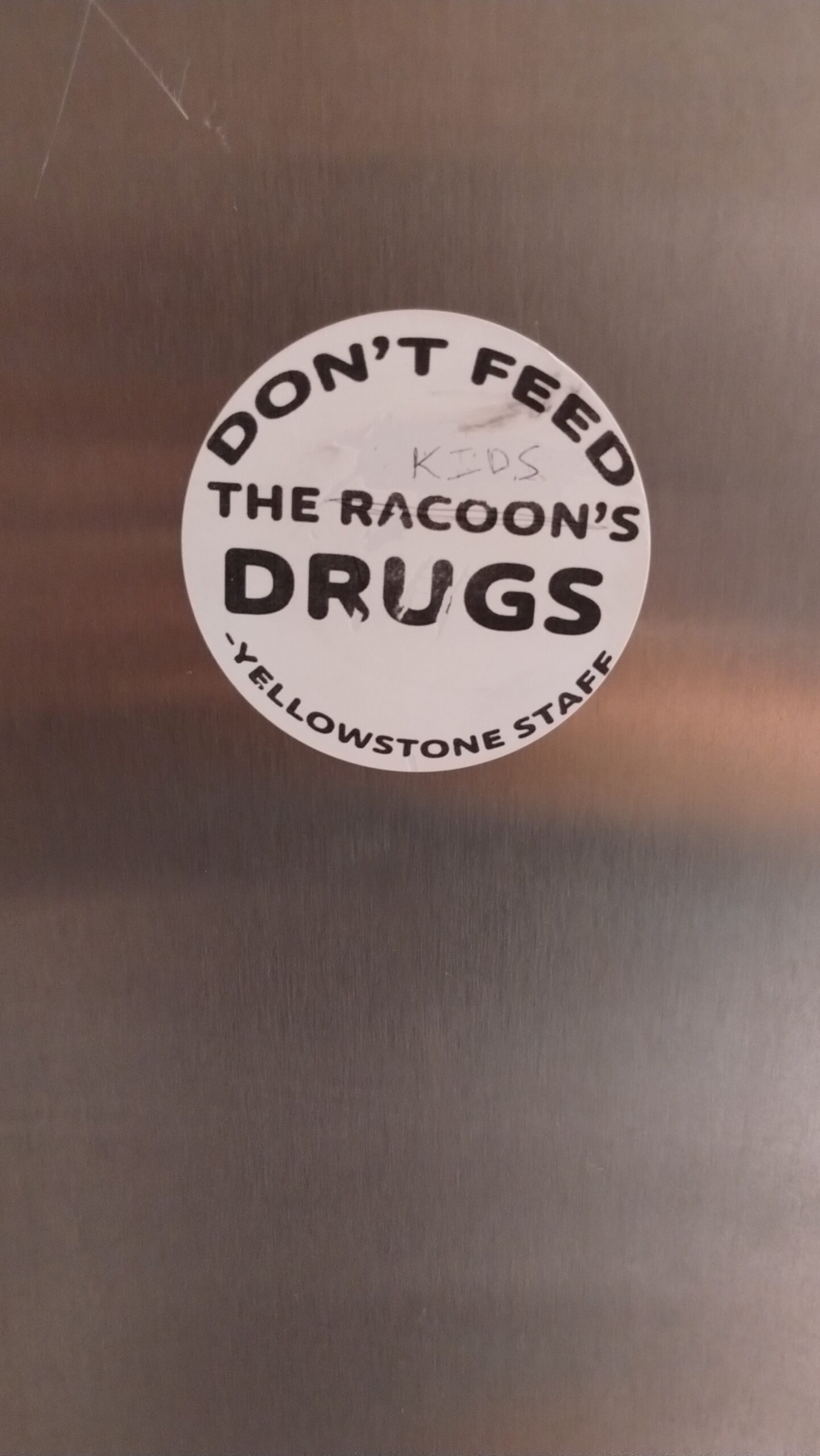
No commentary here, just a cool sticker I saw in the bathroom.
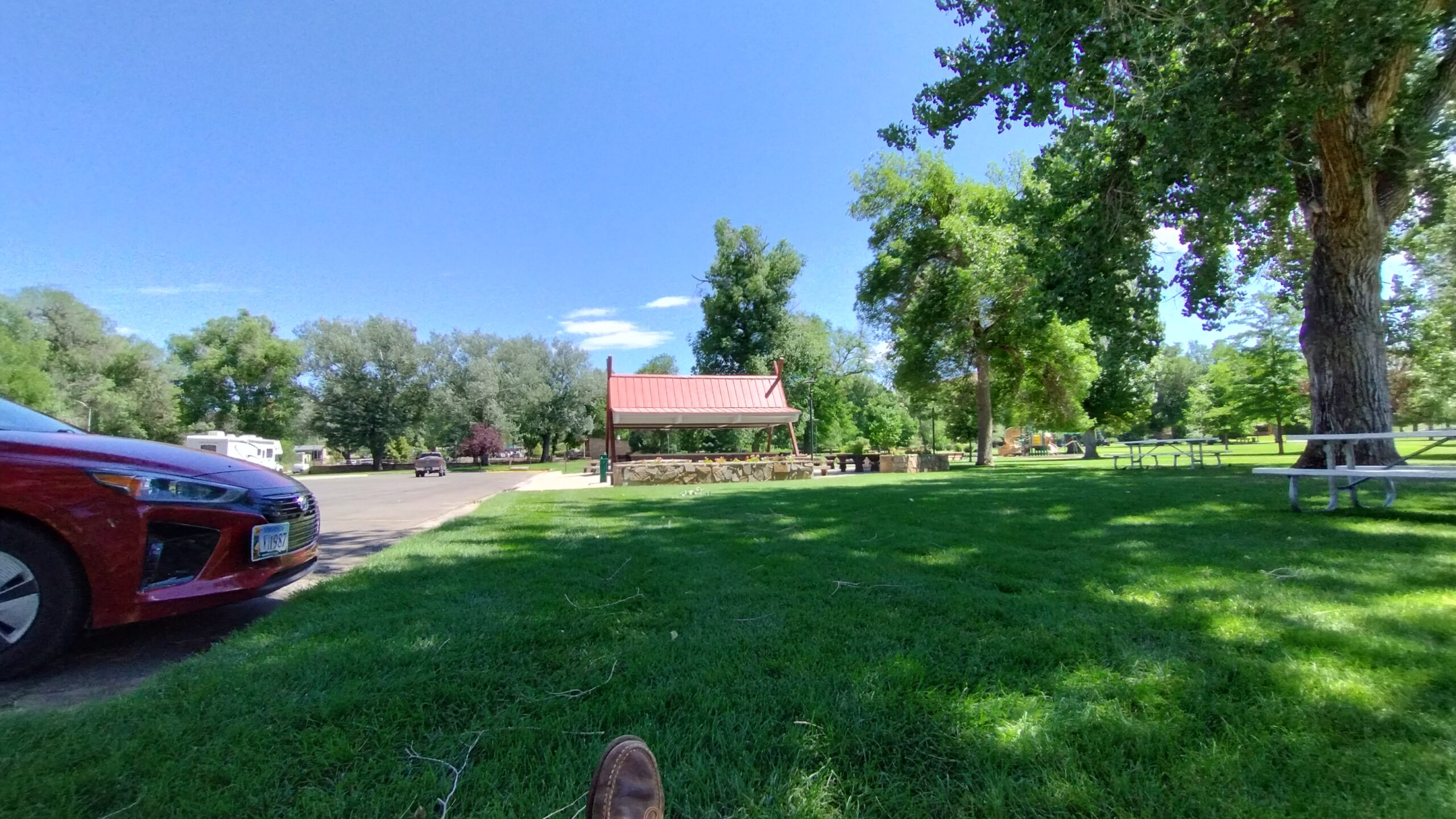
It was a weekday and I had the park more or less to myself. There was a food truck selling homemade Arnold Palmers, and I much enjoyed a big gulp of one, lazing underneath the willow trees for a good long while. It was a damn pleasant time I had in Thermopolis.
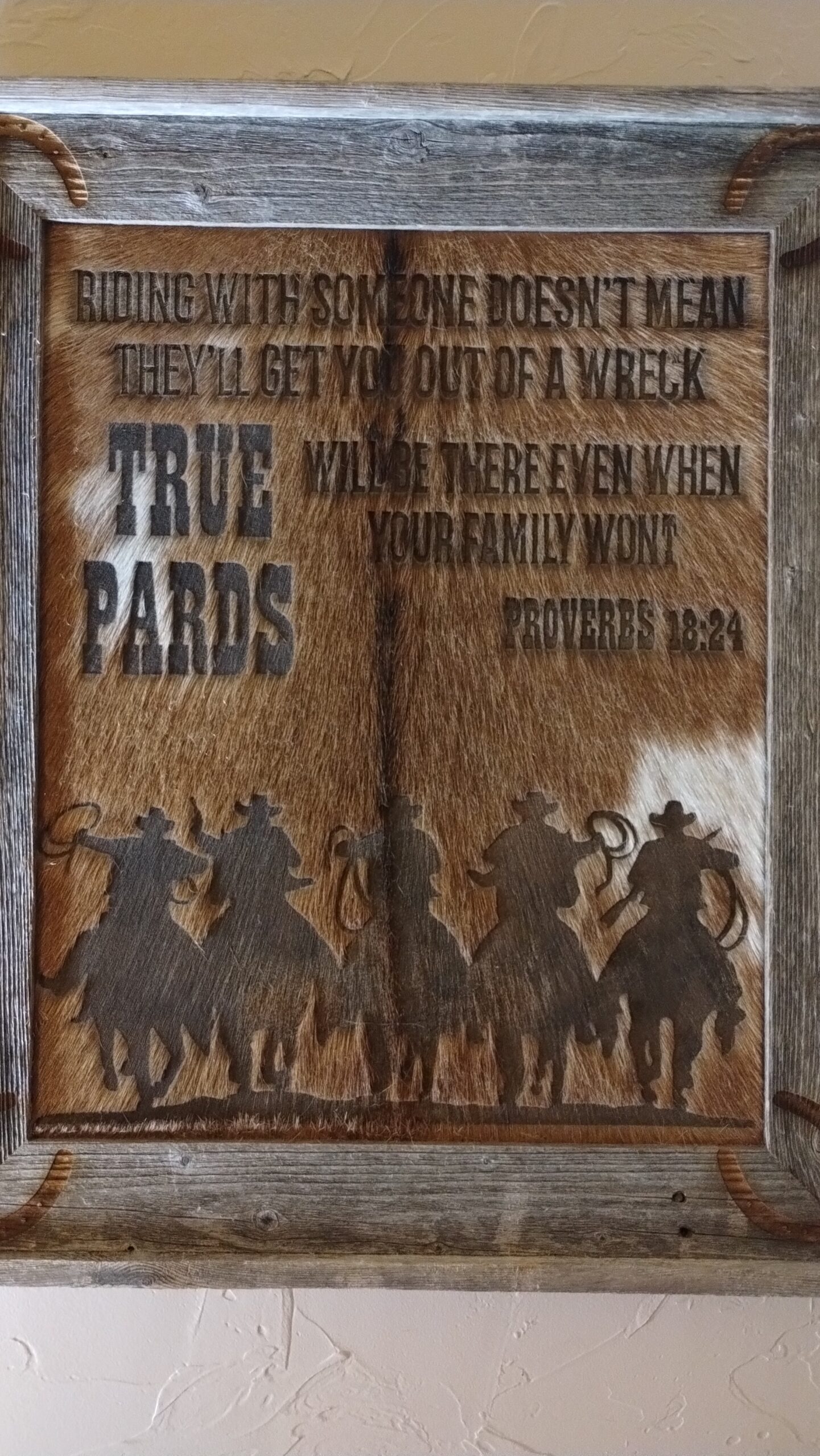
Not really related to the narrative, I saw this at the AirBnB I was staying at in town and I couldn’t help but think this is the Wyoming equivalent of those “live laugh love” signs.
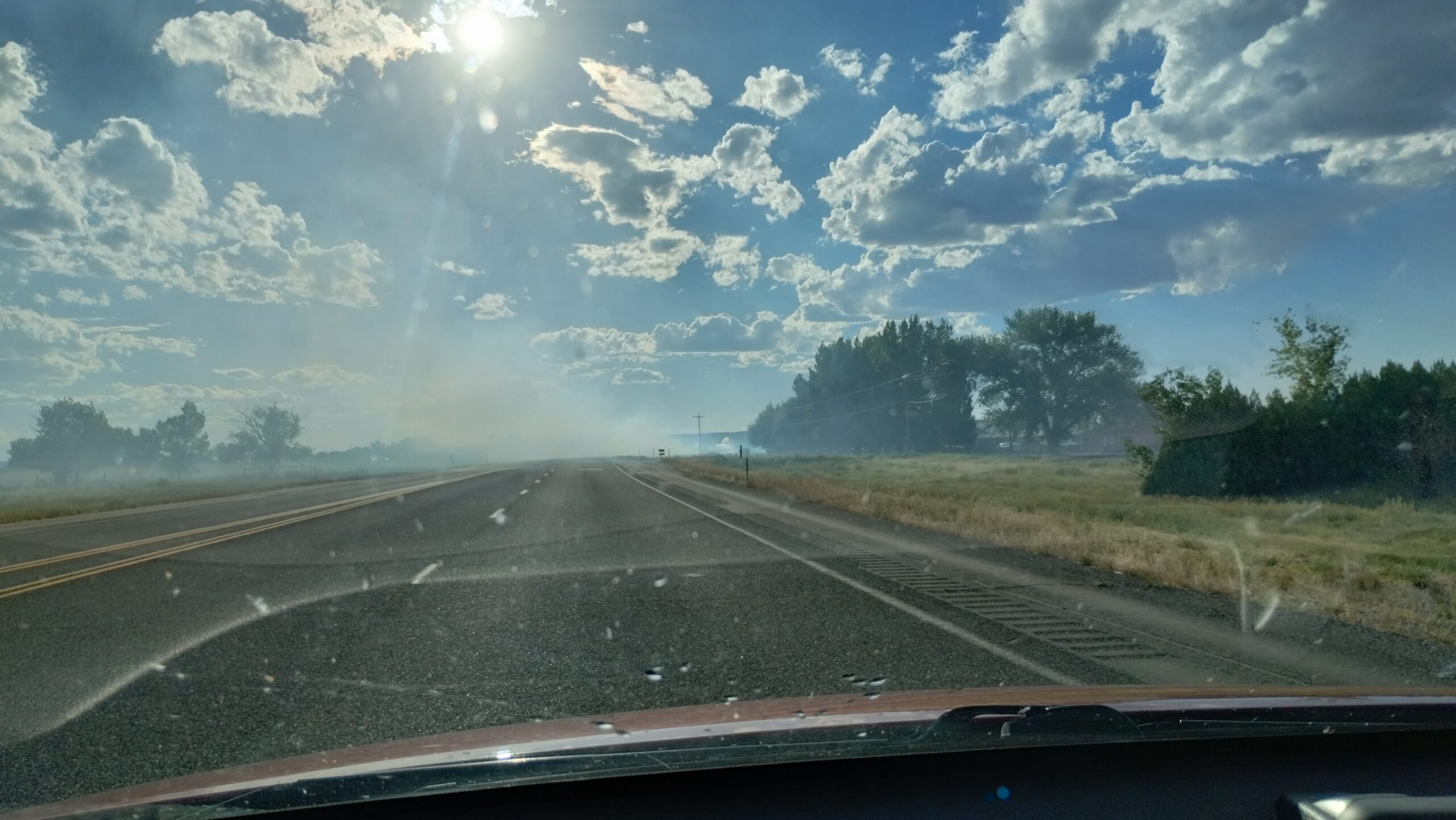
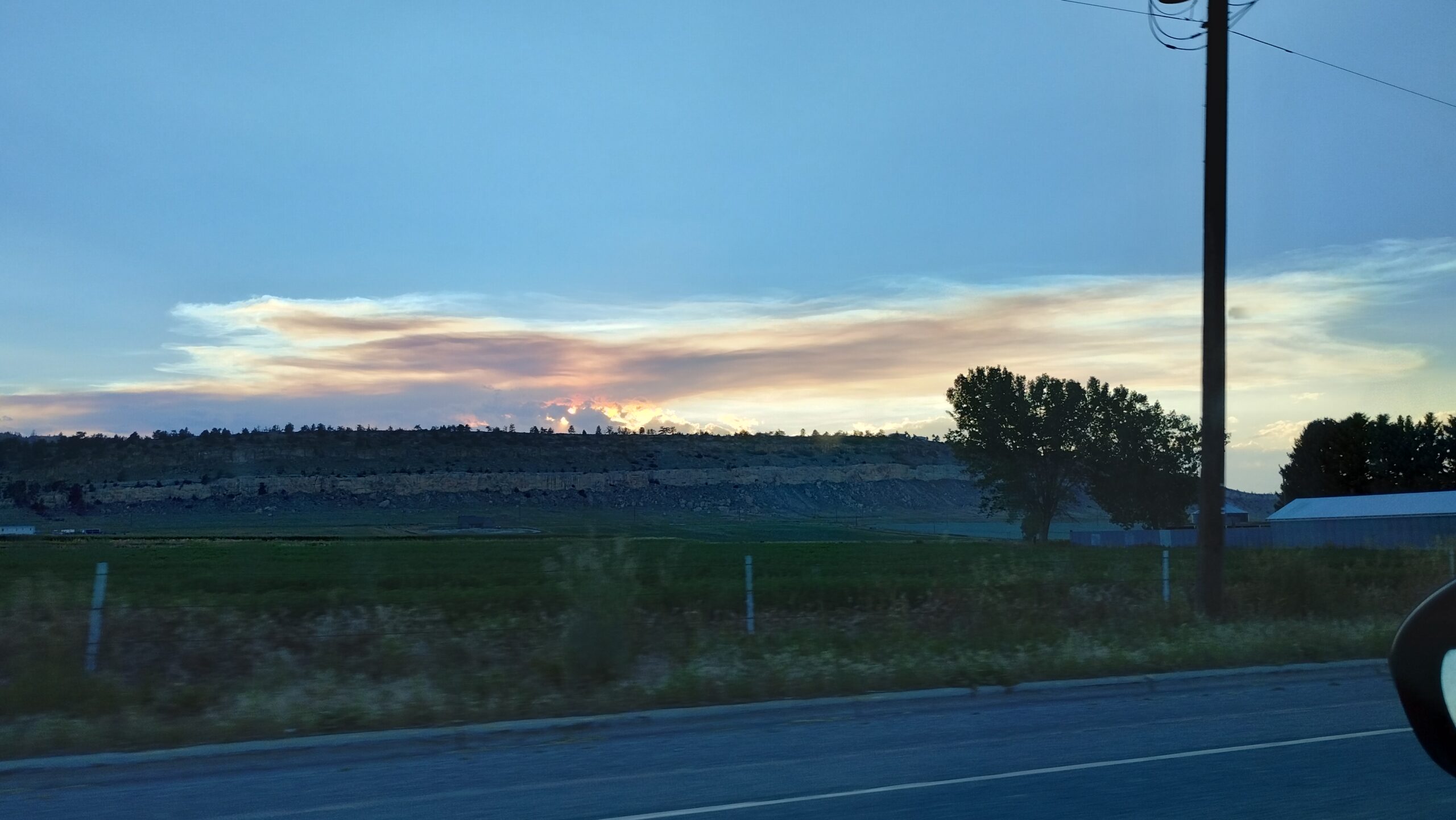
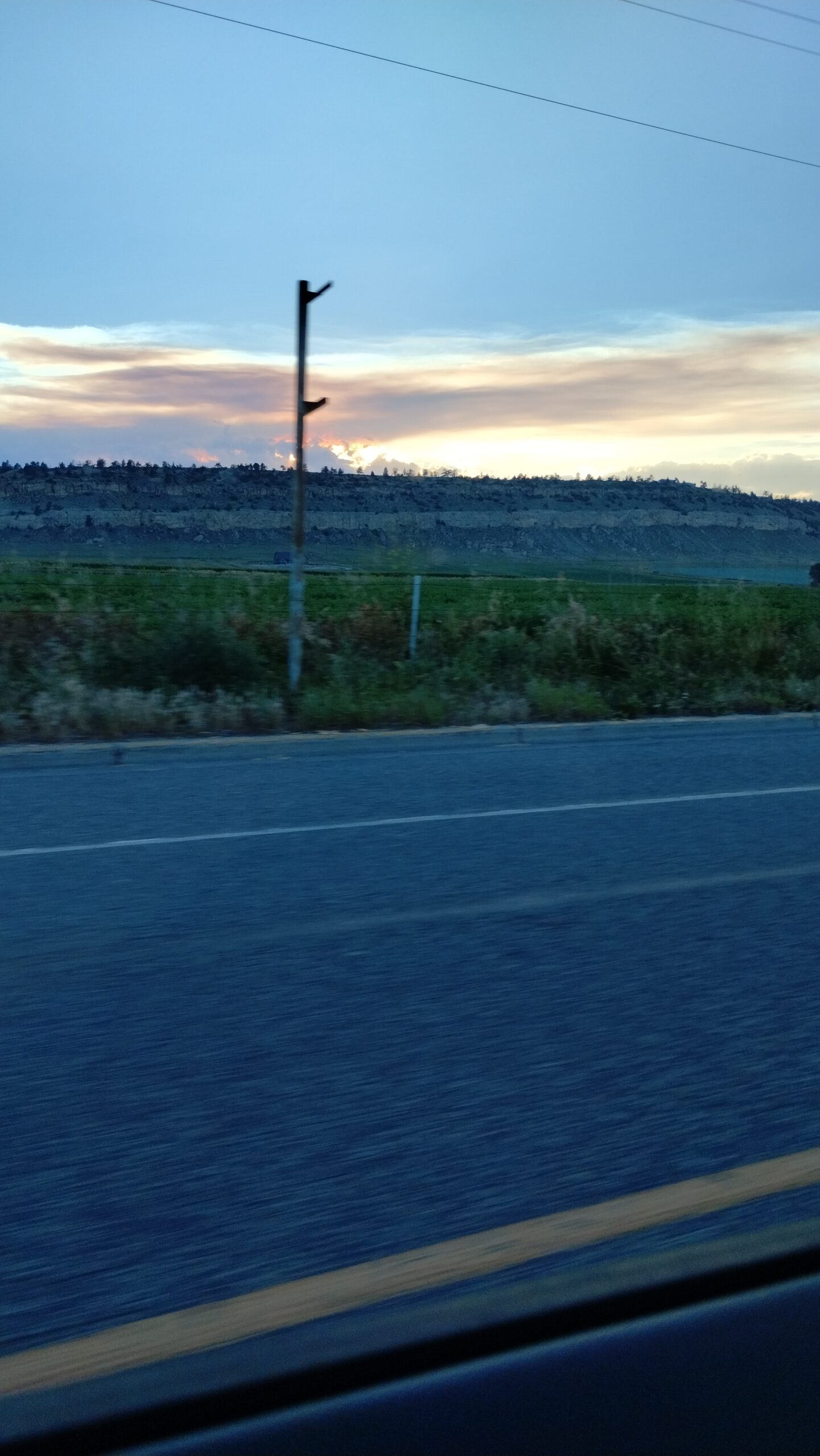
But eventually it was time to move on. I left Thermopolis and made north for Billings, as a stepping stone to an even more obscure locale in eastern central Montana. Why was I there? What did I do? Who did I meet on those windswept plains? Where else does the letter “W” appear in this story? Stay tuned, and find out soon 🙂
Stay well everyone,
Evan 💙